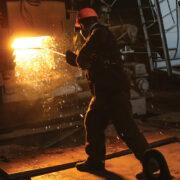
OFFICIALS in Los Angeles County are urging the public to avoid non-essential travel as spring break season begins.
This latest advisory comes nearly a year into the pandemic and as the county’s new COVID-19 cases have climbed above 2,200, the highest single-day total in nearly two weeks.
The county Department of Public Health on Thursday, March 4 confirmed 119 new deaths and 2,253 new cases of COVID-19, bringing the total to 1,198,098 positive cases and 21,778 fatalities.
Despite the latest uptick, hospitalization numbers have decreased and the positivity rate has dropped to 2.5%.
“We may just be weeks away from reducing transmission in LA County enough so that additional re-openings are permitted. However, with increased case numbers in other states, and more circulating variants of concern, spring travel can lead to another surge that frankly would be almost impossible to tolerate,” Public Health Director Dr. Barbara Ferrer said in a statement.
LA County’s travel advisory remains in effect, requiring those who arrive in the county to self-quarantine for 10 days and avoid contact with others.
Ferrer said, “Travel increases the risk of getting and spreading COVID-19. To avoid this, please postpone travel and continue doing your part to slow the spread so that our recovery journey isn’t sidelined.”
Vaccine access
On Thursday, California announced it would allocate 40% of all vaccine doses for the state’s most vulnerable neighborhoods as vaccine equity remains a big issue.
The allocation will benefit around 8 million residents in 400 zip codes, predominantly in Los Angeles County and the Central Valley.
Currently, health care workers, individuals over the age of 65, educators, farmworkers, food and agricultural workers and emergency service personnel are eligible for shots.
The city of Los Angeles is opening a new vaccination center at the University of Southern California on Tuesday, March 9. It will be the seventh vaccine center operated by the city.
It will also have the capacity for sending mobile clinics into nearby neighborhoods in an effort to vaccinate seniors unable to leave their homes as well as other individuals who live in public housing developments or long-term care facilities. The direct vaccinations is in partnership with the city’s Department on Disability and county Department of Public Health.
Changes to state’s reopening blueprint
The California Department of Public Health (CDPH) released updates to the state’s Blueprint for a Safer Economy reopening framework focused on activities that can be conducted outdoors with consistent masking, two factors that are scientifically shown to reduce the risk of COVID-19 spread. The updates allow outdoor ballparks, stadiums and theme parks to open with significantly reduced capacity, mandatory masking and other public health precautions. These changes take effect April 1.
Outdoor sports and live performances (with fans/attendees) are eligible to begin April 1. In the purple tier, capacity will be limited to 100 people or fewer and attendance will be limited to regional visitors. Advanced reservations will be required, and no concession or concourse sales will be allowed. In the red tier, capacity will be limited to 20%.
Concession sales will be primarily in-seat (no concourse sales). In the orange tier capacity will be limited to 33% and in the yellow tier capacity will increase to 67%. Attendance will be limited to in-state visitors in the red, orange and yellow tiers.
Amusement parks are eligible to reopen in the red tier beginning April 1. Capacity will be limited to 15% in the red tier. In the orange tier, that limitation will increase to 25%, and then 35% in the yellow tier. Attendance will be limited to in-state visitors.
LA County remains in the state’s most restrictive purple tier, meaning COVID-19 is still a widespread risk.
Officials continue to warn that the downward trend in numbers and more vaccinations are not a free pass to have large gatherings and abandon public health measures.
“Our biggest worry is, of course, that people will relax too much, decide not to wear their face mask, decide not to keep their distance, decide to go back to having parties,” Ferrer said. “We’re just not there yet. None of that would be safe at this point, and all of it can cause spread.”









